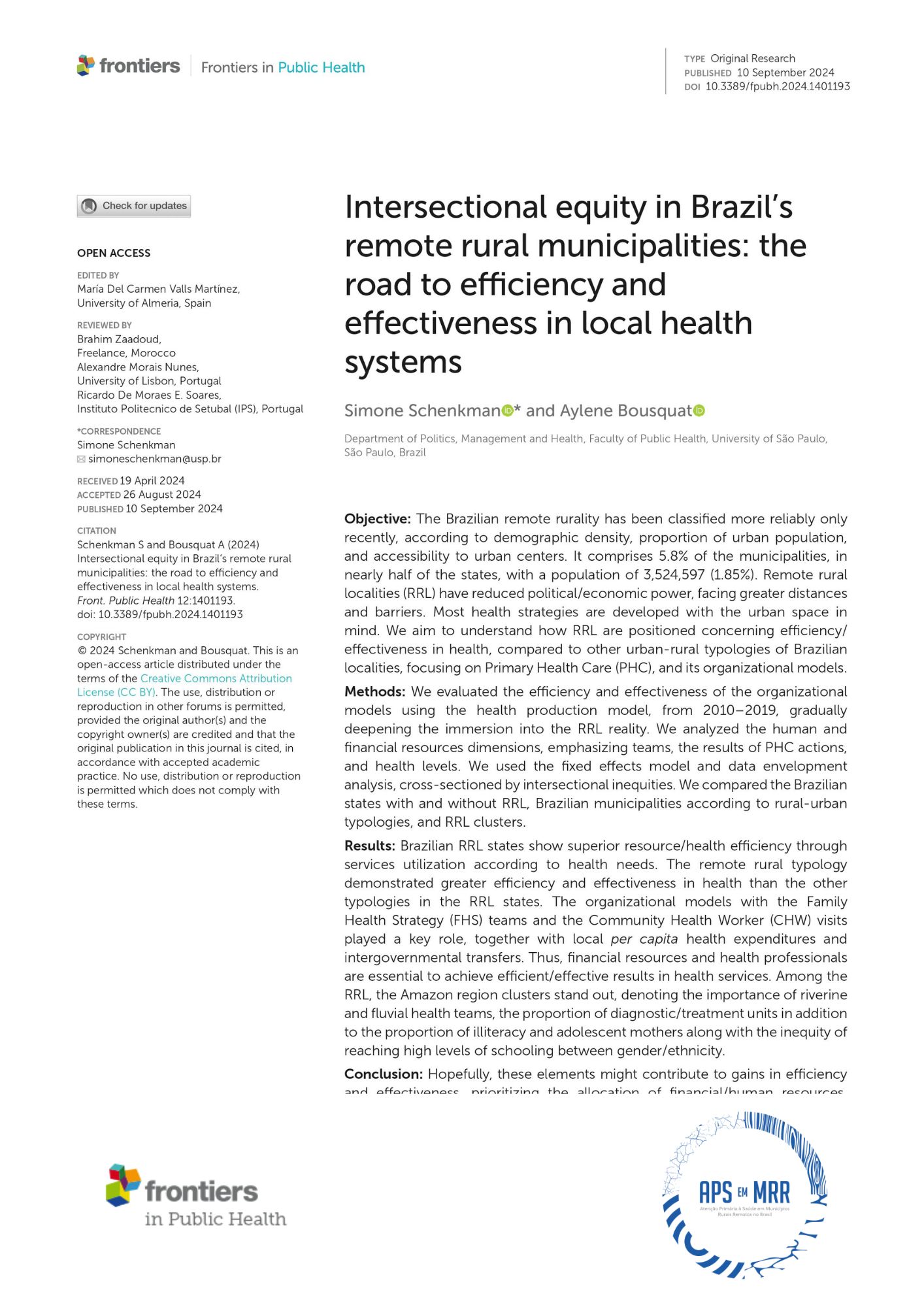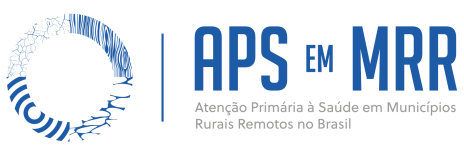Intersectional equity in Brazil’s remote rural municipalities: the road to efficiency and effectiveness in local health systems
Intersectional equity in Brazil’s remote rural municipalities: the road to efficiency and effectiveness in local health systems
Resumo
Objective: The Brazilian remote rurality has been classified more reliably only recently, according to demographic density, proportion of urban population, and accessibility to urban centers. It comprises 5.8% of the municipalities, in nearly half of the states, with a population of 3,524,597 (1.85%). Remote rural localities (RRL) have reduced political/economic power, facing greater distances and barriers. Most health strategies are developed with the urban space in mind. We aim to understand how RRL are positioned concerning efficiency/effectiveness in health, compared to other urban-rural typologies of Brazilian localities, focusing on Primary Health Care (PHC), and its organizational models.
Methods: We evaluated the efficiency and effectiveness of the organizational models using the health production model, from 2010–2019, gradually deepening the immersion into the RRL reality. We analyzed the human and financial resources dimensions, emphasizing teams, the results of PHC actions, and health levels. We used the fixed effects model and data envelopment analysis, cross-sectioned by intersectional inequities. We compared the Brazilian states with and without RRL, Brazilian municipalities according to rural-urban typologies, and RRL clusters.
Results: Brazilian RRL states show superior resource/health efficiency through services utilization according to health needs. The remote rural typology demonstrated greater efficiency and effectiveness in health than the other typologies in the RRL states. The organizational models with the Family Health Strategy (FHS) teams and the Community Health Worker (CHW) visits played a key role, together with local per capita health expenditures and intergovernmental transfers. Thus, financial resources and health professionals are essential to achieve efficient/effective results in health services. Among the RRL, the Amazon region clusters stand out, denoting the importance of riverine and fluvial health teams, the proportion of diagnostic/treatment units in addition to the proportion of illiteracy and adolescent mothers along with the inequity of reaching high levels of schooling between gender/ethnicity.
Conclusion: Hopefully, these elements might contribute to gains in efficiency and effectiveness, prioritizing the allocation of financial/human resources, mobile FHS teams, availability of local diagnosis/treatment, and basic sanitation. Finally, one should aim for equity of gender/ethnicity in income and education and, above all, of place, perceived in its entirety.

| Autores |
Simone Schenkman & Aylene Emilia Moraes Bousquat
|
| Países |
Brasil
|
| Periódico |
Todos
|
| Idioma |
Inglês
|
| Ano |
2024
|
| Própria |
1
|
| Tipo |
Artigo
|
